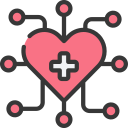The Role of Machine Learning in Personalized Medicine
Personalized medicine is revolutionizing healthcare by shifting from a one-size-fits-all approach to tailored medical strategies based on individual differences. Central to this evolution is machine learning, an advanced subset of artificial intelligence that leverages vast datasets and sophisticated algorithms to predict, diagnose, and recommend treatment options specific to each patient. By analyzing and interpreting complex biological data, machine learning is enhancing the accuracy and efficiency of personalized care, opening new possibilities for improved outcomes and patient experiences.


Genomic Data Analysis
Genomic data holds vast amounts of information pivotal to individual health. Machine learning algorithms can sift through billions of genetic sequences to identify patterns and mutations associated with disease susceptibility or drug response. This deep analysis enables the identification of individuals at risk for specific conditions long before symptoms develop. Consequently, preventative strategies can be tailored—perhaps recommending lifestyle changes or frequent monitoring. By unlocking hidden genetic insights, machine learning equips clinicians with powerful tools to personalize diagnosis and intervention, fostering proactive healthcare grounded in scientific rigor.

Medical Imaging Enhancement
Medical imaging generates enormous volumes of data, often requiring expert interpretation. Machine learning excels in recognizing intricate patterns and anomalies in images such as MRIs, CT scans, and X-rays. Sophisticated models can detect signs of diseases like cancer or neurological disorders earlier and with greater precision, thus assisting radiologists in making accurate assessments. The consequence is a reduction in diagnostic errors and more timely, targeted interventions for patients. As these systems learn and improve over time, they function as invaluable aids, ensuring that no critical piece of information is overlooked in the diagnostic journey.

Integration of Electronic Health Records
Electronic health records (EHRs) encompass numerous data points spanning years of patient history. Machine learning systems can integrate this wealth of longitudinal data to identify important trends, correlations, and warning signs tailored to an individual. By continuously analyzing and learning from evolving patient data, these systems flag potential issues—such as adverse drug interactions or sudden health deteriorations—prompting timely action. The analytical capacity of machine learning makes EHR data more than a static record; it becomes a dynamic resource for personalized and predictive healthcare.
Advancing Treatment Recommendations
Predicting Drug Response
Individual responses to medication can differ widely due to genetic, metabolic, and environmental factors. Machine learning models can analyze vast datasets composed of patients’ genetic profiles, lifestyle information, and treatment histories to predict how likely someone is to benefit from a particular drug. By flagging patients predisposed to adverse reactions or non-responsiveness, clinicians can avoid ineffective treatments and pivot to more suitable alternatives. This predictive capability is essential for reducing trial-and-error prescribing, ultimately enhancing safety and therapeutic efficacy across diverse patient populations.


Optimizing Dosage and Combination Therapies
Traditional approaches to drug dosage and therapy combinations often rely on standardized charts or trial-and-error processes. Machine learning introduces a dynamic approach by continuously processing individual patient data—such as age, weight, liver function, and co-existing illnesses—to recommend ideal dosages and drug combinations. Algorithms uncover subtle patterns influencing drug metabolism and interaction, allowing for real-time adjustments that maximize treatment efficacy while minimizing toxicity. Such precise personalization ensures better outcomes and reduces the risk of complications associated with suboptimal dosing or incompatible therapeutic regimens.
Enhancing Patient Monitoring and Prevention
Continuous Risk Assessment
Ongoing patient monitoring requires intelligent systems that can make sense of constant data influx. Machine learning enables the real-time assessment of risk by integrating signals from physiological measurements such as heart rate, blood glucose, and movement patterns. When anomalies suggest the likelihood of an acute event, such as a cardiac episode or glycemic crash, the system can alert both the patient and their care team instantly. This immediacy empowers quick intervention, potentially preventing emergencies and ensuring that at-risk individuals receive timely, personalized attention.
Early Detection of Disease Progression
Chronic diseases often manifest subtle changes before significant symptoms arise. Machine learning algorithms analyze long-term datasets for trend deviations indicating early disease progression or treatment failure. For instance, minor shifts in respiratory patterns or daily activity levels can herald the onset of complications in heart or lung patients. By flagging these precursors, machine learning supports timely adjustment of therapeutic strategies, possibly averting hospitalizations. Such preemptive care allows for a continuously refined and individualized approach, ensuring interventions are administered at the most impactful moments.
Personalized Preventive Strategies
Preventing illness is central to personalized medicine, and machine learning plays a critical role in customizing prevention plans. By evaluating a wide array of personal risk factors—genetics, environment, lifestyle choices, and even social determinants—algorithms can recommend individualized strategies for maintaining health. These may include dietary guidelines, targeted exercise routines, or periodic screenings based on predicted risks. The synergy of big data and intelligent analysis helps patients and providers shift from reactive to predictive care, fostering long-term wellness optimized for each individual’s unique context.
Join our mailing list
